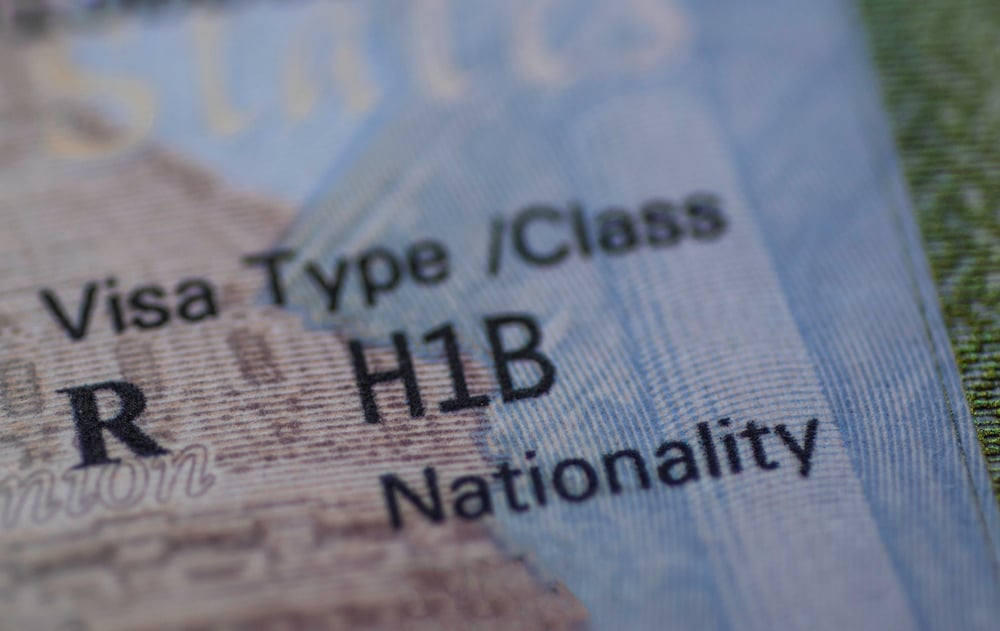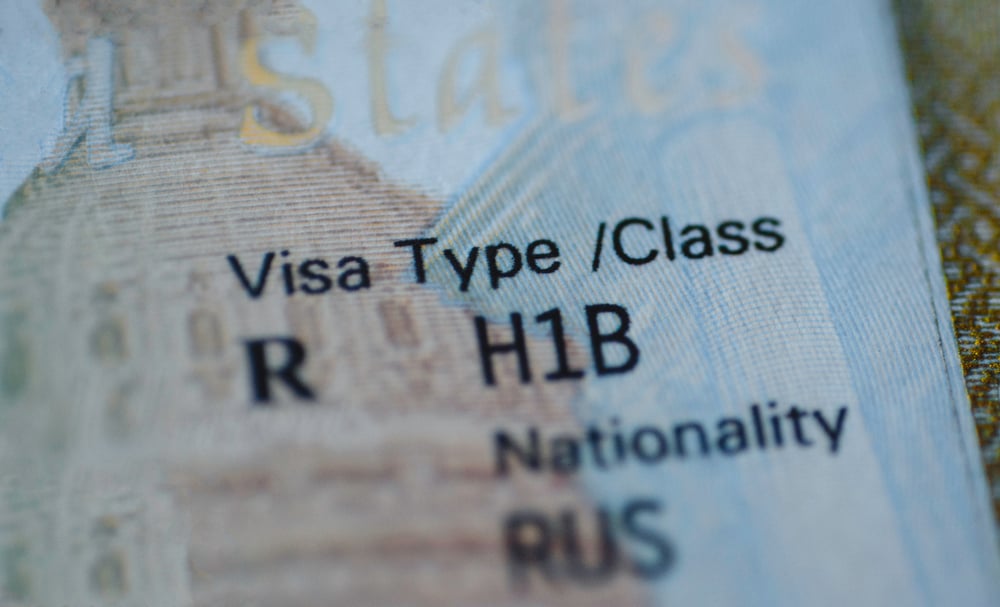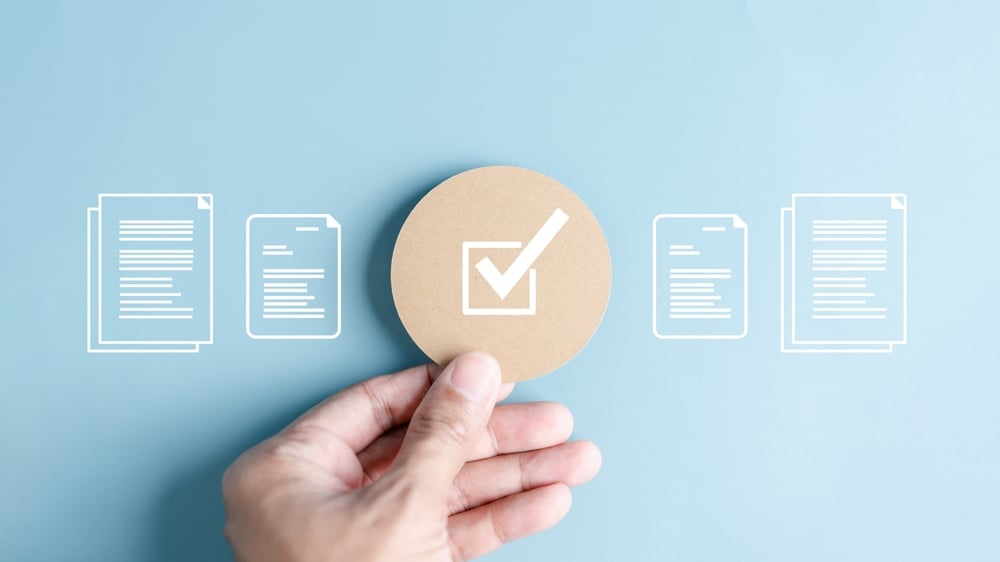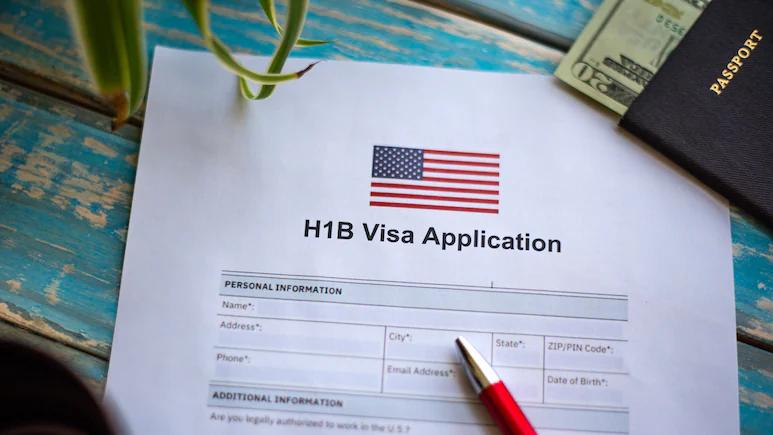H1B Visa Stamping in USA: What You Need to Know

If you’re an H1B visa holder planning to return to the U.S. after spending time abroad, getting your visa stamped is a critical step. The H1B visa stamp in your passport proves your legal right to work in the United States, and it must be obtained at a U.S. Embassy or Consulate outside the country before re-entry.
While there was a recent pilot program that briefly allowed for H1B visa stamping in the USA, offering a domestic visa renewal option for some applicants, this program has now ended. This means that H1B visa holders must once again complete the stamping process abroad.
The stamping process typically involves scheduling an appointment at a consulate, submitting documents like your approval notice and employment verification, and attending an in-person interview with a U.S. Consular Officer. As long as there are no significant changes to your employment situation, you should receive your stamped visa within a few weeks, allowing you to return to the U.S. and continue working.
What happened to the H1B Visa Stamping in USA Pilot Program?

The H1B Visa Stamping in USA Pilot Program was a temporary initiative designed to simplify the visa stamping process for eligible H1B visa holders. Typically, H1B visa holders have to travel outside the U.S. to get their visa stamped at a U.S. Embassy or Consulate. This often involves significant time, cost, and risks, including the possibility of being stuck abroad due to administrative processing delays.
The pilot program aimed to change this by allowing domestic visa renewal, where certain H1B visa holders could complete the stamping process within the U.S., eliminating the need for international travel. The program was limited in scope, with a select number of U.S. locations and strict eligibility requirements. While it offered a more convenient alternative to traditional stamping, the H1B Visa Stamping Pilot Program has now ended, and the H1B visa stamping process has reverted to the previous procedures.
Although the H1B Visa Stamping in USA Pilot Program has ended, it’s possible that similar programs or initiatives could be introduced in the future.
Keep an eye on updates from USCIS or check the Manifest Law Blog to stay informed about potential changes that could impact the H1B visa stamping process.
What This Means for H1B Visa Holders
With the domestic visa renewal program now concluded, H1B visa holders must revert to the traditional stamping process. Here’s what this means for you if you’re an H1B visa holder:
- Traveling Abroad Is Necessary Again: To obtain an H1B visa stamp, you must leave the U.S. and visit a U.S. Embassy or Consulate in another country. Common locations include Mexico, Canada, or your home country.
- Planning for Longer Wait Times and Appointments: Appointment availability can vary by location, and visa processing times may be affected by seasonal demand or geopolitical factors. It’s crucial to schedule your appointment well in advance to avoid travel disruptions.
- In-Person Interview and Documentation: You will need to bring key documents, including your I-797 Approval Notice, employment verification, passport, and other supporting documents. During the interview, you’ll be required to answer questions about your role, employer, and job duties.
- Risks of Delays or Denials: The possibility of administrative processing or unexpected complications exists, which can delay your return to the U.S. It’s important to ensure all documents are complete and accurate to minimize risks.
Eligibility Criteria for H1B Visa Stamping
If you’re planning to get your H1B visa stamped, it’s important to know whether you meet the eligibility requirements. Here’s a breakdown of who is eligible and what you need to know:
- Approved H1B Petition: The first and most critical requirement is having an approved H1B petition. This is usually your Form I-797 Notice of Approval, which confirms that your employer’s request to hire you under the H1B category has been approved. Without this, you cannot proceed with H1B visa stamping.
- Valid Passport: Your passport must be valid for at least six months beyond your intended period of stay in the U.S. If your passport is close to expiring, renew it before your visa appointment to avoid any issues during the stamping process.
- Consular Appointment for Stamping: You need to schedule an appointment at a U.S. embassy or consulate if you’re outside the U.S., or potentially within the U.S. under the new pilot program.
- Employer Compliance: Your employer must be compliant with all the terms of the H1B petition, including offering the job position outlined in the application and paying the prevailing wage. Any discrepancies between the job described in the petition and the actual job could result in complications or denial of the visa stamp.
- No Ineligibility Factors: You must not have any grounds of ineligibility that would prevent you from receiving a U.S. visa. This includes issues such as criminal records, previous visa overstays, or any other violations of U.S. immigration laws. If you have any concerns in this area, consulting with an immigration attorney at Manifest Law can help clarify your situation.
Step-by-Step Process of H1B Visa Stamping

Now that the H1B Visa Stamping in USA Pilot Program has ended, the H1B visa stamping process has reverted to the traditional method, which requires traveling outside the United States. Here’s a look at the current H1B visa stamping process:
Step 1: Travel Abroad
- Domestic visa renewal is no longer an option. H1B visa holders must leave the U.S. to get their visa stamped.
- You can schedule your appointment at a U.S. Embassy or Consulate in your home country, Canada, Mexico, or any other country where U.S. consular services are available.
Step 2: Schedule Your Visa Interview
- Visit the U.S. Visa Information and Appointment Services website for the country where you will apply. Create a profile and complete the required information.
- Pay the Machine-Readable Visa (MRV) fee, which is a non-refundable fee required to book your appointment. This fee amount varies by location.
- Select a date and time for your visa interview.
Step 3: Complete the DS-160 Form Online
- Fill out the DS-160 form, which is the online nonimmigrant visa application that collects your personal, travel, and employment information.
- Once completed, you’ll receive a confirmation page with a barcode that you need to bring to your visa appointment.
- You’ll also need to upload a recent photo meeting U.S. visa requirements during the DS-160 form completion process.
Step 4: Gather Required Documents
- Valid Passport: Your passport should be valid for at least six months beyond your intended stay in the U.S.
- Form I-797 Approval Notice: Proof of your approved H1B petition.
- Form DS-160 Confirmation Page: The page with the barcode that you printed after completing the DS-160 form.
- Appointment Confirmation: A printout of your appointment confirmation.
- Employment Verification Letter: A letter from your employer confirming your employment, job title, salary, and work location.
- Pay Slips and Tax Returns: Recent pay slips and tax documents (like W-2 forms) to prove your employment status.
- Supporting Documents: Additional documents that support your H1B status, such as your educational certificates, previous H1B visas, and any other documents requested by the consulate.
Step 5: Attend Your Visa Interview
- During the interview, the consular officer will review your documents and ask questions about your job, employer, and other relevant details.
- You will also have your fingerprints taken as part of the interview process.
Step 6: Wait for Visa Processing
- The processing time for H1B stamping can take anywhere from a few days to a few weeks, depending on the embassy or consulate .
- Once approved, your passport with the H1B visa stamp will be returned to you via the consulate’s chosen delivery method (pickup or courier service).
Step 7: Return to the U.S.
- With the newly stamped H1B visa in your passport, you can re-enter the United States and resume your employment!
Key Documents for H1B Visa Stamping

When preparing for H1B visa stamping, having the correct documents is crucial to ensure a smooth process. These documents will be reviewed during your visa interview to confirm your eligibility and support your application.
Here’s a list of the key documents you’ll need:
Valid Passport
Your passport needs to be valid for at least six months beyond your planned stay in the U.S. If it’s expiring soon, renew it ahead of time to avoid any last-minute headaches.
Form I-797 Approval Notice
This is your golden ticket! The I-797 is proof that your H1B petition has been approved by USCIS, confirming your legal right to work in the U.S.
Form DS-160 Confirmation Page
After filling out your DS-160 online application, print the confirmation page with the barcode. You’ll need to bring this to your visa interview—it’s your official entry ticket to the stamping process.
H1B Visa Appointment Confirmation
Once you’ve booked your interview, make sure to print the appointment confirmation. This shows you’ve got your spot secured at the embassy or consulate.
Employment Verification Letter
This letter from your employer confirms your job details, including your position and salary. It’s a crucial document that backs up everything in your H1B application.
Recent Pay Stubs, W-2 Forms, and Tax Returns (if applicable)
If you’re renewing your H1B visa, bring recent pay stubs, W-2 forms, and tax returns to show that you’ve been employed and are compliant with your H1B terms.
Academic Qualifications and Transcripts
Carry your degree certificates and transcripts that validate your qualifications for the job. These documents help prove that you meet the requirements for your specialized position.
Previous H1B Visas and Supporting Documentation
If you’ve had an H1B visa before, bring along your previous visa stamps and supporting documents. This helps verify your immigration history and shows your ongoing compliance.
Recent Passport-Sized Photographs
Bring a few recent passport-sized photos that meet U.S. visa requirements. Check the specifications on the embassy or consulate’s website to make sure they’re the right size.
| Manifest Tip: It’s always a good idea to double-check the specific requirements for the embassy or consulate where you’ll be attending, as they may have additional requests or updated guidelines. |
H1B Visa Stamping Fees
For an H1B visa stamping in the USA, you’ll need to pay certain fees as part of the process. The primary fee is the Machine Readable Visa (MRV) fee, which is usually around $190, although the exact amount can vary depending on your country of application.
This fee is non-refundable and must be paid before you can schedule your visa appointment.
In some cases, additional fees might apply, such as the Visa Issuance Fee, which depends on your nationality and whether your country has a reciprocity agreement with the U.S.
| Manifest Tip: Make sure to keep your payment receipts, as you’ll need them for your visa appointment. |
Traveling Back to the U.S. with Your Stamped H1B Visa

Once you’ve got your H1B visa stamped, you’re all set to travel back to the U.S. and resume your life and work there. But before you head to the airport, it’s important to understand the key things you need to know to ensure a smooth re-entry.
Having your stamped H1B visa means you’ve been approved to enter the U.S. as an H1B worker, but you’ll still need to be prepared with the right documents and information to clear U.S. Customs and Border Protection (CBP) without any issues.
When you arrive at the port of entry, you’ll be required to show your passport with your H1B visa stamp, along with other supporting documents like your I-797 Approval Notice, a recent employment verification letter, and your most recent pay stubs.
These documents prove that you are still employed in the U.S. under the terms of your H1B petition and help assure the CBP officer that you’re entering for the right reasons.
| Manifest Tip: Keep these documents in your carry-on luggage, as you’ll need to present them during the inspection process. |
During the CBP interview, the officer might ask questions about your job, your employer, and your stay in the U.S. Answer honestly and directly—these questions are routine, and as long as your answers match the information on your visa and I-797, you should have no problems.
Keep in mind that having a stamped visa doesn’t automatically guarantee entry; final approval is always up to the CBP officer. However, as long as your documents are in order and your status hasn’t changed, you can confidently look forward to re-entering the U.S.
How Manifest Law Can Help with H1B Visa Stamping
Manifest Law is here to take the stress out of your H1B visa stamping process. Our experienced immigration attorneys guide you through every step—from gathering the right documents to preparing for your interview—so you don’t have to worry about missing a detail. Whether it’s your first stamp or a renewal, we handle the complexities, answer your questions, and help you avoid common pitfalls that can cause delays.
Book a free consultation today to learn more.
Frequently Asked Questions
Can you get your H1B visa stamped within the U.S.?
Currently, you can’t get your H1B visa stamped inside the U.S. To get your visa stamp, you’ll need to travel to a U.S. Embassy or Consulate in your home country or another designated location outside the U.S.
There was a domestic visa renewal program that allowed some H1B holders to get their visas stamped within the U.S., but it has now ended. This program aimed to make things easier by cutting out the need to travel abroad, but it’s no longer available. For now, H1B visa holders have to stick to the traditional process, which means scheduling an appointment abroad and completing the necessary steps to get your visa stamped.
How long does the H1B visa stamping process take?
The H1B visa stamping process can vary in length depending on the consulate’s workload and your specific situation.
Typically, the H1B visa stamping process can take anywhere from a few weeks to a couple of months. This includes scheduling the interview, processing the documents, and receiving your stamped visa.
What happens if your H1B visa stamp expires while you are in the U.S.?
If your H1B visa stamp expires while you’re in the U.S., you can continue to live and work legally as long as your H1B status is still valid, which means your I-797 approval notice and your I-94 record are current. However, if you leave the U.S., you’ll need a new visa stamp to re-enter. You’ll have to go through the stamping process again at a U.S. Embassy or Consulate abroad before returning.
Can an H1B visa get rejected during stamping?
Yes, H1B visas can be rejected during the stamping process. Rejections usually happen due to missing or incorrect documentation, discrepancies during the interview, previous visa violations, or issues with your employer’s H1B petition. To minimize the risk, ensure all your paperwork is accurate and consistent, and be prepared to answer questions about your job, employer, and stay in the U.S. Consulting with an immigration attorney can also help you navigate potential red flags.
Does H1B visa stamping require an interview?
Yes, an interview is generally required for H1B visa stamping. During the interview at the U.S. Embassy or Consulate, you’ll be asked questions about your job, employer, and purpose of travel. While the interview is usually straightforward, being well-prepared with the correct documents and clear answers can help make the process smoother. Some applicants, such as those renewing their visas under specific conditions, may be eligible for an interview waiver, but this is determined on a case-by-case basis.



















